If i’d have to name two of my favourite architecture studios i’d probably come up with Recetas Urbanas and realities:united. I can’t imagine architecture studios more different from each other. A simple look at their website (one is a delight to use, the other never fails to drive me insane) will prove my point. Both have recently published a monograph about their work and i’m going to review them over the weekend. Today, i’ll kick off with Collective Architectures | Arquitecturas Colectivas – Trucks, Containers, Collectives | Santiago Cirugeda. Tomorrow will be the turn of Tim and Jan Edler.
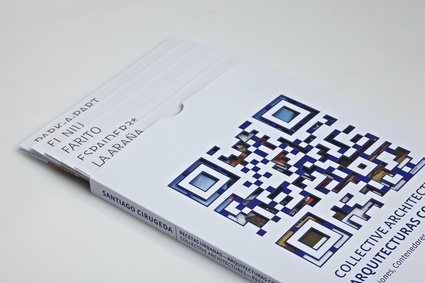
Publisher Ediciones Vib[]k says: Trucks, Containers, Collectives is an initiative by Santiago Cirugeda (Recetas Urbanas) which has inspired more than a dozen collectives to get involved in creating a network for spaces that are self-managed by the entire Spanish territory. This is no longer a matter of experimenting with individual, isolated situations, a process which Cirugeda initiated fourteen years ago and, in any case, is being reassessed during these times of recession. Rather it’s a
self-organised and joint action taken by small citizen groups who unite their efforts. What begins as a war map having the Spanish peninsula as its battleground leads to an international cooperation network: “Collective Architectures”.
This book is released under construction. It’s an incomplete book, undergoing changes and will remain alive. At www.plataformabooka.net its contents are updated and rewritten. Anyone who is interested as well as those involved are welcome to offer up their perspective. This open book aims to capture new questions that boost and enrich an environment of collaboration and knowledge rooted in experience.
The printed book is thought up as a dynamic object. Words and veils invite us to explore it, in a tactile and joy experience. It skin goes off, the interior displays and reorders. When empty, the book reveals a code that connects with its digital double. The imagination and action of readers are invited to design and editing.
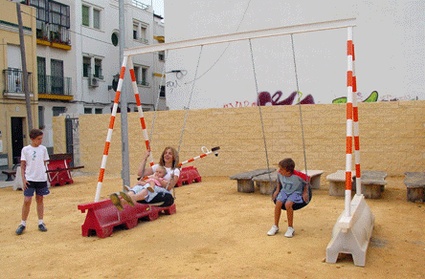 Legislation and temporary occupation of empty lots, 2004
Legislation and temporary occupation of empty lots, 2004
At the end of the 90’s Santiago Cirugeda Parejo set up a provisional scaffolding in the front of the building where he lived. He needed a space to study but didn’t have the permit to build. What he did obtain however was the permit to erect scaffolding “to clean up the wall”. The scaffolding was quickly turned into a place to relax and invite friends for beers. For the architect, the city is a ‘living organism that must be adapted to the needs of its inhabitants.”
Cirugeda trained as an architect. If circumstances want it, he’d also define himself as an artist. Some would add that he is also a social agitator and a space hacker. Since 1996, his critical practices has been bending, testing and flexing the rules governing city planning in what he calls actions of ‘a-legality.’ His actions are not illegal but they are not strictly legal either, they just take advantage of the loopholes in city-planning regulations. Once the validity of his experiments has been tested and approved, they are explained into recetas (recipes) which can be replicated in other locations and contexts.
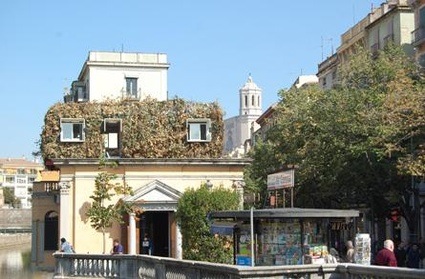 El Niu, above El Bòlit, a Contemporary Art Center in Girona, 2008
El Niu, above El Bòlit, a Contemporary Art Center in Girona, 2008
Cirugeda’s studio, Recetas Urbanas, is building prosthesis on the side or top of buildings for people who lack the means or time to rent a flat and even for institutions in need of a quick space for meeting or residencies.
Cirugeda’s charismatic personality never prevented him to step back and see his work as the result of a collective effort that involves networks of architects and groups of citizens.
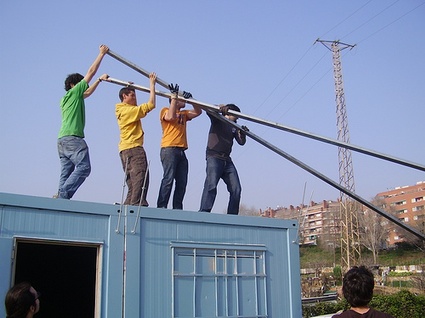 LaFundició, 2008 (image)
LaFundició, 2008 (image)
The book Collective Architectures – Trucks, Containers, Collectives contains mostly essays by architects, art critics, curators, artists and academics who give their own interpretation of Cirugeda’s work. The volume itself is encased in a cover along with a few sturdy leaflets that analyze in details some of Recetas Urbanas’ most recent works. Each leaflet unveils the budget of the construction but also its story, the outcome of the project, the lessons learnt from it and the hopes that have arisen during the whole adventure.
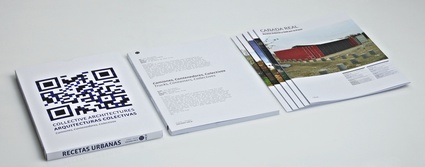 Collective Architectures – Trucks, Containers, Collectives is published by VIB[ ]K, a young, independent publishing house that investigates innovative ways of re-considering the traditional publishing process and breathing new life into books. Their methods involve combining printed and digital media in order to make books responsive to the interchange between authors and readers, even before being printed. The books are ‘open’, they grow and evolve through the open platform b()()ka. And you have until June 15 to submit your contribution and be part of this experiment in “Collective Architectures.”
Collective Architectures – Trucks, Containers, Collectives is published by VIB[ ]K, a young, independent publishing house that investigates innovative ways of re-considering the traditional publishing process and breathing new life into books. Their methods involve combining printed and digital media in order to make books responsive to the interchange between authors and readers, even before being printed. The books are ‘open’, they grow and evolve through the open platform b()()ka. And you have until June 15 to submit your contribution and be part of this experiment in “Collective Architectures.”
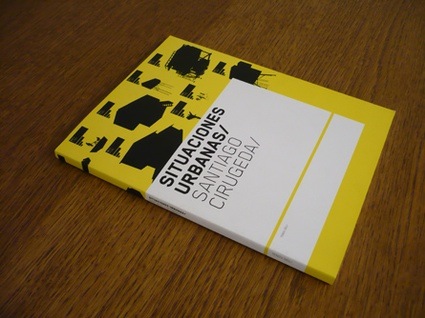 Situaciones Urbanas
Situaciones Urbanas
Another book about Cirugeda’s work was published in 2007. Its design was much simpler and the content reproduced mostly what you can already find on the website of Recetas Urbanas. Given the grudge i bear against that website, Situaciones Urbanas (“Urban situations”) was a gift from the gods for me and it remains my favourite. Collective Architectures – Trucks, Containers, Collectives, however, has several advantages over its predecessors. It’s in spanish and english (whereas Situaciones hasn’t been translated yet), it’s in colour and contains many more in-depth essays.
Related: In Construction. Recipes from Scarcity, Ubiquity and Excess, Videos of the day: The Influencers, Avant-garde architecture in Spain (2), Casa Pollo.
